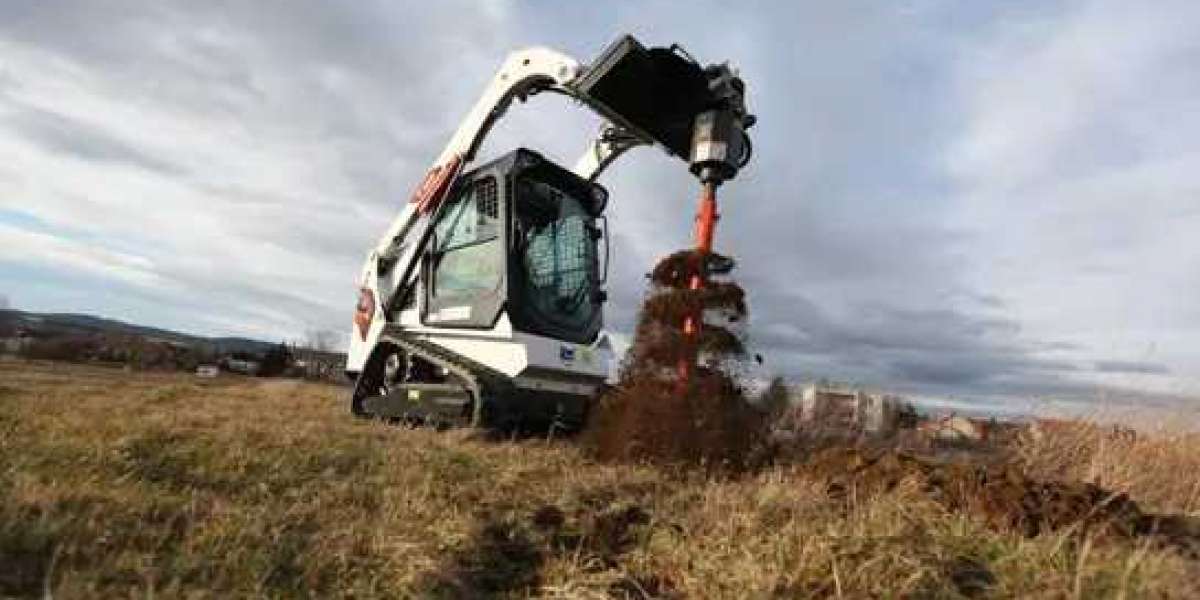In industries where efficiency and resilience are paramount, equipment plays a decisive role in determining success. Construction, agriculture, forestry, and mining all demand machines that can withstand punishing conditions while delivering consistent performance. Among the most versatile pieces of equipment on modern job sites are next-generation track loaders. These machines have evolved significantly over the past decade, offering operators advanced features that not only improve productivity but also reduce downtime and operating costs.
While traditional skid steers and compact loaders have long been staples in heavy-duty work, the latest generation of crawler-style loaders brings a new dimension of capability. These modern machines, often referred to as crawler loaders or compact track machines, are designed to handle rugged terrain, steep inclines, and unstable surfaces with ease. Their ability to maintain traction and stability in environments where wheeled equipment struggles makes them indispensable for contractors and operators working in demanding conditions.
Enhanced Versatility Across Applications
One of the defining advantages of next-gen loaders is their adaptability. Whether moving soil on a construction site, clearing debris in disaster recovery zones, or handling feed in agricultural operations, these machines excel in diverse applications. The integration of advanced hydraulics, precision controls, and interchangeable attachments allows operators to switch seamlessly between tasks. This adaptability reduces the need for multiple machines, saving both time and capital investment.
In forestry and land management, for example, crawler-style loaders can be fitted with mulching heads or grapples to clear brush efficiently. In agriculture, they can be equipped with buckets, augers, or bale spears to streamline farm operations. The ability to transition quickly between roles makes them a cornerstone of productivity in industries where versatility is critical.
Superior Traction and Stability
Demanding environments often present challenges such as mud, snow, sand, or uneven terrain. Next-generation loaders are engineered with advanced undercarriage systems that distribute weight evenly, minimizing ground pressure and maximizing traction. This design ensures that operators can maintain control and stability even in the harshest conditions.
Unlike wheeled machines, crawler loaders are less prone to sinking or losing grip on soft surfaces. This advantage translates directly into reduced downtime and fewer delays caused by environmental obstacles. For contractors working on tight deadlines, the ability to keep projects moving regardless of weather or terrain is a significant productivity booster.
Operator Comfort and Efficiency
Modern equipment design places a strong emphasis on operator experience. Next-gen loaders are equipped with ergonomically designed cabins, intuitive controls, and advanced monitoring systems. Features such as climate-controlled interiors, adjustable seating, and touchscreen displays enhance comfort during long shifts.
Ad Additionally, real-time performance monitoring allows operators to track fuel consumption, hydraulic pressure, and machine health. This data-driven approach empowers operators to make informed decisions, reducing the likelihood of breakdowns and optimizing efficiency. By prioritizing operator comfort and usability, manufacturers ensure that productivity is not compromised by fatigue or inefficiency.
Reduced Maintenance and Downtime
Maintenance is a critical factor in determining overall productivity. Next-gen loaders are designed with durability and ease of service in mind. Reinforced components, sealed bearings, and simplified access points make routine maintenance faster and less labor-intensive.
Furthermore, predictive maintenance technologies are increasingly integrated into these machines. Sensors and diagnostic systems can detect potential issues before they escalate, allowing operators to schedule repairs proactively. This reduces unexpected downtime and extends the lifespan of the equipment. For businesses operating in high-pressure environments, minimizing interruptions is essential to maintaining profitability.
Fuel Efficiency and Sustainability
Environmental considerations are becoming increasingly important across industries. Next-gen loaders incorporate fuel-efficient engines and emissions-reduction technologies that align with global sustainability goals. By consuming less fuel and producing fewer emissions, these machines not only reduce operating costs but also contribute to greener operations.
Hybrid and electric models are beginning to emerge, offering even greater efficiency and reduced environmental impact. As regulations tighten and industries move toward sustainable practices, adopting advanced equipment ensures compliance while maintaining productivity.
Technology Integration and Automation
The integration of smart technologies is transforming the way operators interact with heavy equipment. Features such as GPS guidance, telematics, and semi-autonomous controls are now standard in many next-gen loaders. These technologies enable precise operation, reduce human error, and enhance overall efficiency.
For instance, GPS-enabled systems allow operators to follow exact grading plans, ensuring accuracy in construction projects. Telematics provide fleet managers with real-time data on machine usage, location, and performance, enabling better resource allocation. Automation features, such as self-leveling buckets or automated attachment recognition, further streamline operations.
Conclusion
The role of the track loader in demanding environments has expanded far beyond its traditional applications. Today’s machines embody a fusion of strength, intelligence, and adaptability, enabling operators to tackle complex tasks with confidence. By investing in next-generation equipment, businesses can ensure that they remain productive, efficient, and prepared for the challenges of tomorrow.













